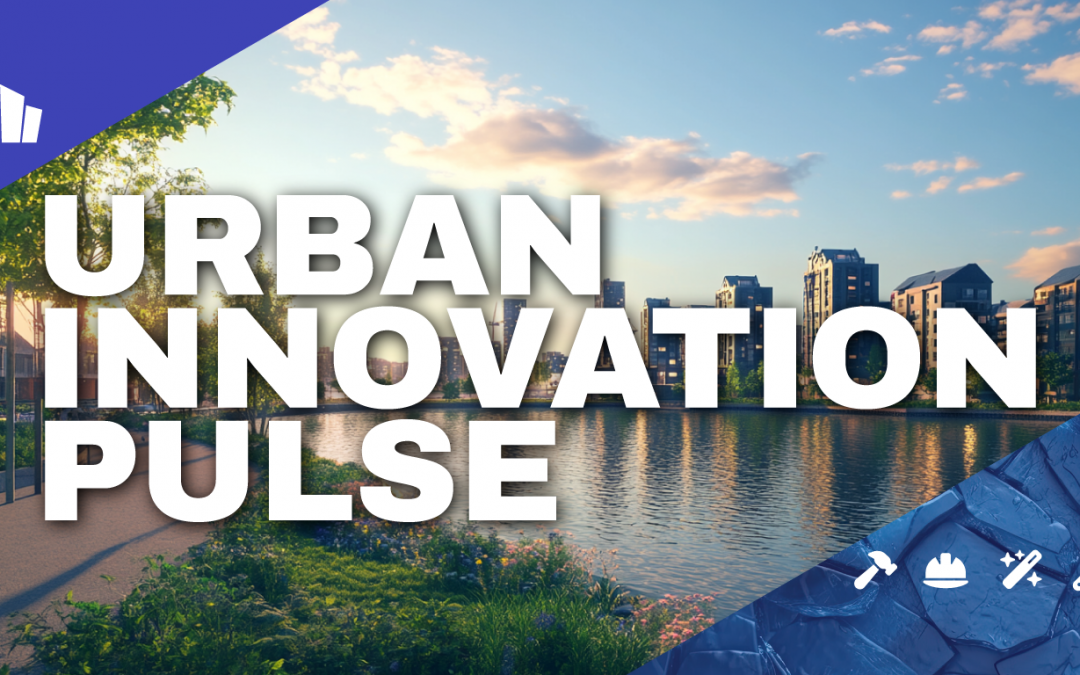Urban Innovation Pulse: Weekly Report
Search Date Range: January 28, 2025 – February 3, 2025
This week’s Urban Innovation Pulse highlights key innovations in the built environment from January 28 to February 3, 2025. From advancements in smart building technologies in the United States to smart city developments in China, breakthroughs in advanced materials in Germany, and emerging concepts in urban planning in Pakistan, this report explores how technology is shaping the future of our cities and infrastructure.
Smart Buildings
1. Next-Generation Smart Buildings in the United States – The integration of IoT, machine learning, automation, and Building Information Modeling (BIM) is optimizing building performance. Data-driven planning is making buildings less wasteful and more resilient. (Autodesk)
2. Energy-Efficient Upgrades Enhance Home Resilience in Colorado – Energy-efficient upgrades have inadvertently made homes more resilient against extreme weather. Techniques such as advanced insulation, heat pumps, and airtight construction derived from the ”passive house” movement are contributing to this resilience. (WSJ)
3. Sustainable Smart Building Communities in Urban Areas – Recent trends in the construction and design of smart building communities focus on incorporating sustainable materials, energy-efficient systems, and smart technologies, contributing to reduced energy consumption and improved air quality. (Green.org)
4. Climate-Adaptive Building Shells in Architecture – Climate-adaptive building shells (CABS) are being developed to interact dynamically with environmental conditions. These façades or roofs adjust to changing weather, contributing to energy savings and improved indoor environmental quality. (Wikipedia)
Smart Cities
1. China’s Sponge City Initiative in Sanya – The ”sponge city” concept is being implemented to manage stormwater and reduce flood risks. This approach incorporates permeable surfaces and green spaces to absorb and reuse rainwater. (FT)
2. Integration of AI and Big Data in Urban Management in China – Chinese cities are adopting advanced technologies such as AI, big data, and 5G to improve urban efficiency and enhance city management. (EY)
3. Regenerative Urban Developments in Singapore – Developments like the Pan Pacific Orchard hotel feature landscaped terraces that enhance local ecosystems, exemplifying regenerative urban projects that restore environmental balance. (Wired)
4. Sustainable Urban Planning in Tokyo – Tokyo’s Bay eSG Project incorporates local materials and green spaces to address climate change and urban challenges. (Wired)
Advanced Materials
1. Development of Smart Glass in the United States – New smart glass materials adjust their properties in response to environmental conditions, improving energy efficiency in buildings. (Wikipedia)
2. Innovations in Self-Healing Materials in Germany – German researchers are developing self-healing materials that can repair themselves, increasing the longevity of buildings and reducing maintenance costs. (ForTender)
3. Advancements in Aerogel Insulation in Switzerland – New aerogel insulation materials offer low thermal conductivity and high energy efficiency, making them ideal for sustainable construction. (Wikipedia)
4. Exploration of Hempcrete as a Sustainable Building Material in Canada – Hempcrete, a bio-composite material made from hemp hurds and lime, provides excellent insulation and a lower environmental footprint than traditional building materials. (Architectural Digest)
Emerging Concepts
1. Sponge City Strategies in Karachi, Pakistan – Architect Yasmeen Lari is implementing sponge city strategies to mitigate urban flooding, including terracotta pavements, pocket gardens, and stormwater wells. (FT)
2. Regenerative Urban Projects in Rotterdam, Netherlands – Rotterdam’s BlueCity project fosters circular economy startups, promoting sustainable urban development. (Wired)
3. Future Home Designs Emphasizing Community Living in the United States – Future homes focus on intergenerational and communal living to create more connected and sustainable communities. (Architectural Digest)
4. Integration of Nature in Urban Living Spaces in the United States – Designs blending organic elements with modern architecture are gaining attention for creating healthier and more sustainable urban environments. (Architectural Digest)
About Urban Innovation Pulse
Urban Innovation Pulse is produced as part of the Future Construction Hub project, coordinated by Metropolia University of Applied Sciences in Finland.
The report synthesizes the latest innovations in four key areas of the built environment:
· Smart Buildings: The latest technologies enhancing energy efficiency, safety, and user comfort.
· Smart Cities: Digital solutions promoting sustainable and efficient urban living.
· Advanced Materials: Cutting-edge materials transforming construction.
· Emerging Concepts: Forward-looking visions for cities and infrastructure
Report Content and Sources
Urban Innovation Pulse compiles insights from diverse and credible sources, including:
• Leading research institutions
• Conferences and publications on urban technology
• Innovations from global companies
• Sustainability-focused organizations
This ensures a comprehensive, up-to-date snapshot of trends shaping the built environment. Each highlight comes from a unique, authoritative publication with a valid, clickable link. No source appears more than once within the same category.
To maintain accuracy and credibility, we aim to exclude Wikipedia as a source and prioritize references to original publications. We are continuously improving the language model to reduce Wikipedia-based citations and replace them with verified, authoritative sources. However, this process is still ongoing, and occasional Wikipedia references may still appear. We remain committed to refining our approach to enhance the quality and reliability of our reports. Furthermore, the website rakennusalantietotaito.fi is not used to avoid self-referencing.
